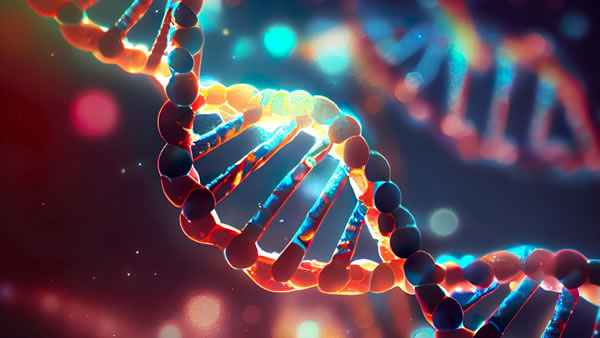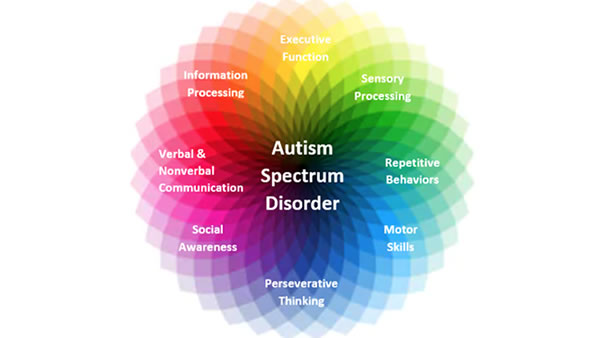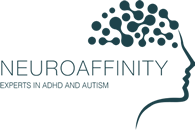WHAT IS Autism?
What is Autism Spectrum Disorder (ASD)?
Autism Spectrum Disorder encompasses a range of conditions affecting a person’s ability to communicate, form relationships, and interact with the world around them. ASD is characterized by a wide variation in challenges and strengths, manifesting early in childhood and influencing daily activities, learning, and social interactions throughout a person’s life.
The traits of Autism usually tend to develop in the early years of childhood and are diagnosed as a result of behavioural observations. At present in the medical world, the causes of Autism are not fully known but there is strong evidence to suggest that genetic factors are involved.
Autism typically presents with social challenges: social communication, social interaction, and social imagination. Social imagination can include limited perspectives and repetitive interests.

1
Social Communication Challenges
- Interpreting Facial Expressions and Tone of Voice: Autistic individuals might find it challenging to read facial expressions and understand the emotional nuances in someone’s tone of voice. This can make social interactions confusing and difficult to navigate.
- Abstract Language: Understanding metaphors, or any non-literal language can be particularly challenging, as they often take words at face value.
- Conversational Turn-Taking: They may find it difficult to take turns in a conversation, often focusing on their own interests. This can lead to monologues rather than dialogues, as they might only engage when the topic is related to their personal interests.
2
Social Interaction Challenges
- Recognizing and Understanding Emotions: Autistic people might struggle to recognize and interpret other people’s emotions, which can make social interactions and relationships more complex.
- Expressing Emotions: They might also find it difficult to express their own feelings in a way that others can understand.
- Filtering Conversation Topics: They may not intuitively understand which topics are appropriate or of interest to others and may inadvertently bring up subjects that others might prefer to avoid.
3
Social Imagination Challenges
- Understanding Behaviour: Autistic individuals might find it difficult to understand why people behave the way they do, which can lead to misunderstandings and social confusion.
- Abstract Ideas: Making sense of abstract concepts or hypothetical scenarios can be challenging, as they often prefer concrete and tangible information.
- Routine and Change: They may have a strong preference for routines and predictability. Changes to their routine can cause significant distress and anxiety.
- Specific Interests: They might have highly specific interests that can turn into obsessions. While these interests can be a source of enjoyment and expertise, they can also dominate their time and conversations, making social interactions more challenging.
Exploring the Causes of Autism
Autism is believed to be caused by a combination of genetic and environmental factors. Genetic predispositions can interact with elements such as prenatal exposure to certain chemicals, complications during birth, or extreme prematurity to influence the development of ASD.


Autism Spectrum Subtypes
Autism is viewed as a spectrum, meaning it includes a range of conditions that affect individuals differently and to varying degrees. The latest guidelines from major health organizations simplify how autism is categorised. Previously, autism was divided into several different types, like Asperger’s syndrome and classic autism, each with specific criteria. However, these distinctions are no longer used in the main diagnostic manuals. Now, there’s one overarching diagnosis called Autism Spectrum Disorder (ASD).
Can Autism Be Cured?
Autism is not an illness to be ‘cured’ but a developmental condition that individuals live with throughout their lives. However, with the right support and interventions, many people with autism can lead full, productive lives.

Detailed Symptoms and Behavioural Characteristics of Autism
1
Communication and Social Interaction Challenges
Individuals with autism spectrum disorder (ASD) might experience delays in developing language skills, use atypical speech patterns, or sometimes may not speak at all. They often face difficulties with basic social interactions, such as maintaining eye contact, responding when their name is called, or understanding social cues. These challenges can make forming relationships more difficult. Specifically:
- Language Development: Delays in speaking, or a lack of spoken language altogether.
- Abnormal Speech Patterns: Use of repetitive or robotic speech, echolalia (repeating words or phrases), or a monotonous tone.
- Eye Contact: Difficulty maintaining eye contact, which can make interactions feel less personal or connected.
- Social Cues: Struggling to understand body language, facial expressions, and tone of voice, which can lead to misunderstandings in conversations.
- Responding to Name: They might not respond when called, giving an impression of being unresponsive or inattentive.
2
Resistance to Change and Restricted Interests
People with ASD might require strict routines and experience significant distress if these routines are disrupted. They often have deep, sometimes exclusive, interests in specific topics, dedicating a lot of time and energy to these areas. Specifically:
- Need for Routine: A strong preference for daily routines and predictability.
- Need for Routine: A strong preference for daily routines and predictability.
- Intense Interests: Developing a deep focus on particular subjects, which can become all-consuming and take up a lot of time.
- Obsessions: Interests might turn into obsessions, where they repeatedly talk about or engage with a specific topic.
3
Repetitive Behaviours and Self-Stimulatory Actions
Autistic individuals often engage in repetitive movements and self-stimulatory behaviours, especially in stressful or exciting situations. These actions serve as coping mechanisms to soothe themselves or manage sensory overload. Specifically:
- Repetitive Movements: Common actions include rocking back and forth, spinning in circles, or flapping hands.
- Self-Stimulatory Actions (Stimming): Behaviours like tapping, blinking, or repeating phrases to provide sensory stimulation and comfort.
4
Sensory Sensitivity
Sensory issues can manifest as either heightened sensitivity or reduced sensitivity to sensory stimuli like sounds, textures, or lights. Specifically:
- Over-Sensitivity: Sounds, lights, or textures may be overwhelming and cause discomfort or pain. For example, certain noises might be unbearable, or certain fabrics might be intolerable to touch.
- Under-Sensitivity: A reduced response to sensory inputs, which can result in a lack of awareness of extreme temperatures or pain.
5
Self-Injurious Behaviours
Behaviours such as head-banging, hand-biting, and skin-picking might occur, often intensifying under stress or due to frustration from communication difficulties. Specifically:
- Head-Banging: Hitting their head against objects.
- Hand-Biting: Biting their own hands.
- Skin-Picking: Picking at their skin, which can lead to injury.
Treatment and Intervention Strategies for Autism
In the UK, treatment and intervention strategies for autism vary widely based on individual needs, but common approaches include:
1
Cognitive Behavioural Therapy (CBT)
This type of therapy can help individuals with autism manage anxiety, depression, and behavioural issues. It focuses on changing negative thought patterns and behaviours.
2
Social Skills Training
This involves teaching social interactions, understanding social cues, and developing communication skills. Group sessions can help individuals practice these skills in a supportive environment.
3
Speech and Language Therapy
Many individuals with autism may have communication difficulties. Speech and language therapy can help improve verbal and non-verbal communication skills.
4
Occupational Therapy
This therapy assists individuals in developing skills necessary for daily living activities. It may also help in managing sensory integration issues.
5
Medication
While there is no specific medication for autism, some individuals may benefit from medication to address co-occurring conditions such as anxiety, depression, or ADHD.
6
Support Groups
Support groups can provide emotional support for families and caregivers.
The Impact of Autism
Autism can have a wide-ranging impact on various aspects of life for individuals with the condition, as well as their families and communities. Here are some key areas where autism can have a significant impact:
Personal Impact

Communication and Social Skills
- Expressive Language: Autistic individuals may have difficulty expressing their thoughts and feelings verbally. This can lead to frustration and misunderstandings.
- Receptive Language: Understanding spoken language can be challenging, particularly with abstract or non-literal expressions (like idioms and metaphors).
- Non-Verbal Communication: Difficulty in reading body language, facial expressions, and gestures can hinder effective communication and social interactions.

Mental Health
- Anxiety and Depression: Social challenges, sensory sensitivities, and difficulty in adapting to change can contribute to high levels of anxiety and depression.
- Emotional Regulation: Challenges in recognizing and managing emotions can lead to emotional outbursts or withdrawal.

Independence
- Daily Living Skills: Tasks such as personal hygiene, cooking, and managing finances may require additional support and teaching.
- Decision-Making: Difficulty in making decisions due to executive functioning challenges, impacting their ability to live independently.
Educational Impact

Learning Styles
- Visual Learners: Many autistic individuals benefit from visual aids and hands-on learning rather than traditional auditory instructions.
- Special Education: Tailored educational programs that focus on individual strengths and weaknesses can significantly enhance learning outcomes.

Academic Achievement
- Strengths in Specific Areas: Autistic individuals often excel in areas like mathematics, music, and visual arts due to their attention to detail and unique perspectives.
- Challenges with Traditional Methods: Standard classroom settings and teaching methods may not align with their learning styles, requiring alternative approaches.

Support Services
- Therapies: Speech therapy, occupational therapy, and behavioural therapy can address specific challenges and improve overall functioning.
- Individualized Education Plans (IEPs): Customized plans that outline specific goals and support strategies are essential for academic success.
Employment Impact

Job
Opportunities
- Employment Rates: Autistic individuals often face higher unemployment rates due to social and communication challenges, as well as workplace biases.
- Job Matching: Finding roles that match their skills and interests is crucial for job satisfaction and productivity.

Workplace Accommodations
- Flexible Schedules: Allowing flexible work hours can help manage sensory overload and anxiety.
- Quiet Workspaces: Providing a calm and distraction-free environment can enhance focus and productivity.
- Additional Training: Extra support and clear instructions can help autistic individuals adapt to job requirements and excel in their roles.
Family Impact

Family Dynamics
- Emotional Strain: Caregiving responsibilities can cause stress and emotional strain within families.
- Siblings: Siblings of autistic individuals may experience a range of emotions, including confusion, resentment, and protectiveness.

Financial Strain
- Therapy Costs: The cost of therapies, medical care, and specialized education can be substantial.
- Loss of Income: Parents may need to reduce work hours or leave their jobs to provide care and support.

Support Networks
- Support Groups: Connecting with other families facing similar challenges can provide emotional support and practical advice.
- Respite Care: Access to respite care services can give families much-needed breaks and help prevent burnout.
Symptoms & Disorders that Occur Alongside Autism?
Autism Spectrum Disorder (ASD) often coexists with a variety of other conditions, which can complicate diagnosis and treatment. Here are some common co-occurring conditions and symptoms:
1
Mental Health Conditions
- Anxiety Disorders: Up to 84% of individuals with autism may experience anxiety, including generalized anxiety, social anxiety, and obsessive-compulsive disorder.
- Depression: Approximately 26% of people with autism may also suffer from depression, which can manifest as low mood, sleep disturbances, and social withdrawal.
- Bipolar Disorder: Some individuals with autism may experience mood swings and episodes of mania and depression.
- Obsessive-Compulsive Disorder (OCD): Repetitive behaviours and compulsions are common in both autism and OCD.
2
Neurodevelopmental and Neurological Conditions
- Intellectual Disability: Around 30% of individuals with autism also have an intellectual disability, which affects learning and development.
- Epilepsy: Epilepsy affects up to 35% of people with autism, compared to 1% in the general population.
- Attention-Deficit/Hyperactivity Disorder (ADHD): Many individuals with autism also exhibit symptoms of ADHD, such as inattention, hyperactivity, and impulsivity.
3
Medical Conditions
- Gastrointestinal Disorders: Issues like constipation, diarrhoea, and other gastrointestinal problems are common.
- Sleep Disorders: Many individuals with autism experience difficulties with sleep, including insomnia and irregular sleep patterns.
- Metabolic Disorders: Some metabolic disorders can coexist with autism, affecting the body’s ability to process nutrients and energy.
4
Sensory Sensitivities
- Sensory Processing Disorder (SPD): Many individuals with autism have heightened or reduced sensitivity to sensory stimuli, such as sounds, lights, and textures.
CONTACT US TODAY
Connect with qualified specialists through our quick and streamlined online or face to face assessment process.
Experience the perfect blend of expertise and convenience.











